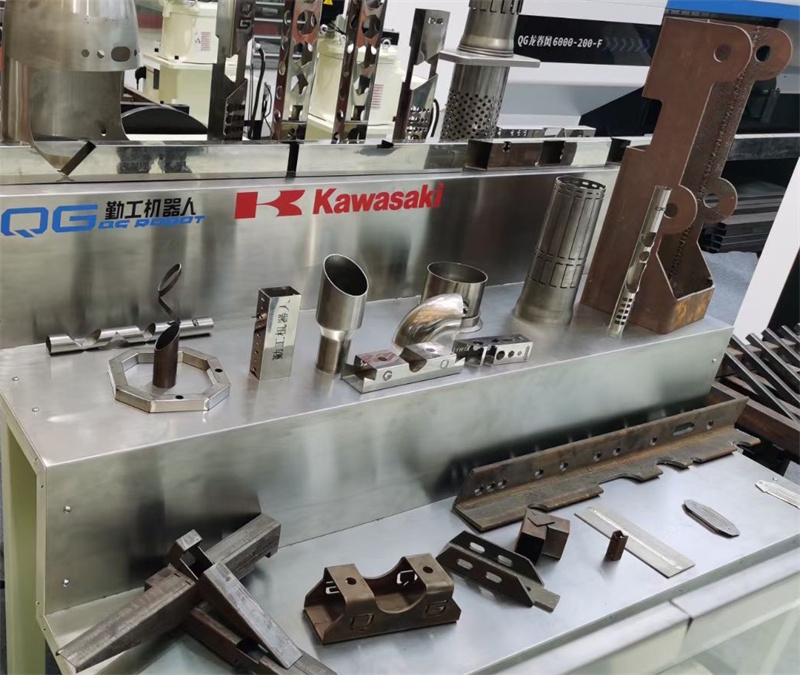News
Grasping the pulse of the industry and measuring industry trends
How to view the unemployment problem caused by machine replacement in industry? The United States has done this before! China is on the road!

In the economic history of the past two centuries, the per capita GDP of most countries in the world has been growing exponentially. While enjoying the economic dividend, people have to admit that without significant technological breakthroughs, such economic progress in human history is impossible. The Enlightenment movement in Britain brought new avenues for transforming scientific discoveries into practical tools for engineers and craftsmen. The discovery of the steam engine made electricity and sanitation facilities the engines driving economic growth, adding standard technologies necessary for survival on the entire planet. Now, the revolution of robots has also arrived.

There has been ongoing debate between the pro and anti factions regarding the social impact of replacing humans with machines, and this debate is taking place worldwide. Relevant research reports and data are also supporting these views. Just like at the beginning of the Industrial Revolution, movements like Ludette were caused by concerns in Britain about labor displacement in the textile sector, and many people's current concerns about machine replacement are mainly due to unemployment. For example, the famous Lutheran protesters in history destroyed the machines they used in their work to ensure employment for workers. Their reason was that if automation could double, triple, or quadruple factory output, the economy would need half, one-third, and quarter of the existing labor force. However, history tells us that machine production is inevitable for the development of factories, and the economy did not decline as a result.
Why do we firmly support machine replacement? The 27 year long process of machine replacement in the United States may reveal the truth behind it from multiple perspectives.
What are the impacts of machine replacement on the United States?
In many regions of the United States, robots have been replacing workers for decades. But from 2007 to 2009, due to the start of the Great Depression, there was a slowdown in machine replacement. The Great Depression was an economic recession that followed the collapse of the US housing market and the global financial crisis. After the Great Depression began, the demand for economic recovery led to a sharp drop in labor costs. The recovery of new industries saved many people's jobs and slowed down the pace of automation in the United States. As a result, after the economic crisis began in 2007, the intensity of robot use began to sharply decline or even almost stagnate. However, strangely enough, after 2009, the intensity of robots nationwide in the United States began to rise sharply and continued to rise thereafter.
A report from the World Foundation studied the actual situation during this period and estimated the impact of increasing automation levels after the Great Depression from 2009 to 2017. The data they obtained showed that during this period, the use of industrial robots in the United States increased by more than twice, but employment rates were not affected. As a result, industrial efficiency improved and the US economy began to recover.
Because machine replacement has strong regional characteristics. Researchers have drawn robot intensity maps for 262 severely affected metropolitan areas in the United States. The report found that the top ten regions with high robot usage are all in the Midwest states, which have consistently had extremely high robot intensity for the past decade. The data for these regions is usually at least twice the intensity of all other regions, but the unemployment rate has not been significantly affected.
What is the reason for this? The report suggests that during this period, robots have not yet brought about the terrifying national impact that many people are concerned about. Ultimately, the reason for this is that the impact of replacing people with robots will vary depending on the worker population and is closely related to regions and industries. The specific manifestation is that the main body of machine replacement is often the lower educated population in the manufacturing industry in the Midwest of the United States. Therefore, after the Great Depression of 2007, young workers first became unemployed at a high rate, often consisting of less educated men and less educated adult women. At the same time, in the manufacturing industry in the Midwest, robots greatly reduced the wages of well educated young men and women, but this situation quickly circulated.
William Rodgers, a public policy professor at Edward Browstein College, who wrote the report, said, "In a sense, an increase in automation clearly eliminates lazy and career failures, particularly young and less educated manufacturing workers in the Midwest, especially young minority workers in these industries, who have paid a great price for machine replacement."
However, Rogers also believes that although companies are constantly adopting machine replacement measures to improve efficiency, the government has introduced strong economic driving measures during this period. Driven by the huge demand for economic recovery, various industries have experienced explosive peaks. Therefore, the strong demand for economic recovery has masked some adverse effects on the wages and jobs of manufacturing workers in the central and western regions. The urgency of employment has prompted this group of early unemployed people to start spontaneous employment transfer, and many new industries that use robots to improve efficiency have generated greater employment demand. Even without such a strong recovery, new industries that use robots have brought more job opportunities than them.
According to a report by Agence France Presse, it is expected that by 2030, robots will bring about 20 million new manufacturing jobs worldwide, while also increasing overall economic output. Therefore, the social unrest brought about by replacing people with machines is not significant. The economics research report from the Herderich Center for Labor Development also states, "These industries that have recovered from the Great Depression not only use a large number of robots, but also hire a fast growing number of robot maintenance personnel."
Data shows that since 2009, the number of robots per capita in the United States has more than doubled, from 0.813 per thousand workers to 1.974 per thousand workers. This means that these unemployed groups are beginning to try to concentrate in related industries centered around the robotics industry. This research result also indicates that at the stage and pace of robot development, as well as under appropriate economic conditions, some workers without a university degree are beginning to benefit from roboticization, as this indirectly promotes their self industry upgrading.
This understanding has been recognized by many authoritative institutions. According to a study by the Federal Reserve Bank of St. Louis, the total use of robots in the US manufacturing industry has more than doubled in the past two decades, and has doubled in other parts of the world. Robots have replaced many categories of workers, and these existing workers are beginning to shift towards robot related and similar industries. Moreover, during the process of machine replacement, not only has the nature of labor changed, but automation processes and efficiency are also being upgraded as a result. According to analysis, robots have also eroded a certain number of intermediate "medium skill" professions, and their share of skilled and low skill positions is also increasing.
Machine replacement is an economic problem
Meanwhile, the report found that the replacement of machines with people has fundamentally transformed many industries and accelerated global economic circulation.
The initial development of industrial robots was essentially a device developed by humans to improve yield and unit output efficiency. In the United States, four manufacturing industries account for 70% of robots: automobile manufacturers (38% of robots in use), electronics (15%), plastic and chemical industries (10%), and metal manufacturers (7%). The popularity of robots in the automotive industry is high, and they are also deeply affected by machine replacement. These industries have high standardization requirements for components due to their large sales in a single category, and machine replacement has significantly improved efficiency.
But in the automotive industry, the United States started with machine replacement, but was surpassed by France in 2007. France has since been in first place, followed by the United States and Germany. The French automobile manufacturing industry uses a robot density of 148 robots per thousand workers, while the United States uses 136 robots, while Italy and Germany use about 120 robots. Dr. Pascual Restrepo, an assistant professor of economics at Boston University, explained this phenomenon in a report published in the Journal of Political Economy: "The average level of France, as well as countries such as Spain, the United Kingdom, and Sweden, was higher than that of the United States in the late 1990s and early 2000s, but in the past decade, the United States has surpassed these countries. This started in 1993, but it was not until 2007 that the United States was hesitant about machine replacement, and was once again overtaken."
The emergence of this phenomenon is due to the disappearance of the advantages of the American machine replacement industry cluster. "Even though the United States is a technologically advanced economy, the production, use, and innovation of industrial robots is a process that requires continuous exploration. Two years of stagnation have left it lagging behind many other developed economies," said Daron Acemoglu, an economist at the Massachusetts Institute of Technology, analyzing the impact of robots in 722 commuting areas on the US mainland. Due to significant regional differences in the intensive use of robotics industry in the United States, once stagnant, the advantages of a certain regional industrial cluster may be lost.
Given the trend of robot development and deployment being concentrated in the Midwest region, the automotive industry was most affected in the United States in 2007, as Michigan had a high concentration of robots, which had a significant impact on employment in the upstream and downstream industries of Detroit, Lansing, and Sagino. "Different industries have different footprints in different parts of the United States," Acemoglu pointed out. "The obvious problem with robots is in Detroit. No matter what happens in the automotive manufacturing industry, the impact on the Detroit area is much greater than elsewhere."
After combining IFR data, researchers found that in these regions, replacing people with machines resulted in each robot replacing an average of about 3.3 jobs locally. However, due to industrial cluster effects, adding robots to the manufacturing industry can benefit people in other industries and regions of the country by reducing commodity costs, and the overall economic benefits obtained by these countries are often higher. For example, adopting robots to install windshields on German Mercedes Benz A-Class sedans will bring more competitive advantages to enterprises in terms of price and encourage local or foreign consumers to make purchases. These small changes may accelerate the speed of the economic cycle. Researchers believe that by 2030, the increase in global productivity brought about by the replacement of machines with people will bring a $5 trillion "robot dividend" to the global economy, and the replacement of machines with people is more of an economic issue.
Backtop

Scan and follow us